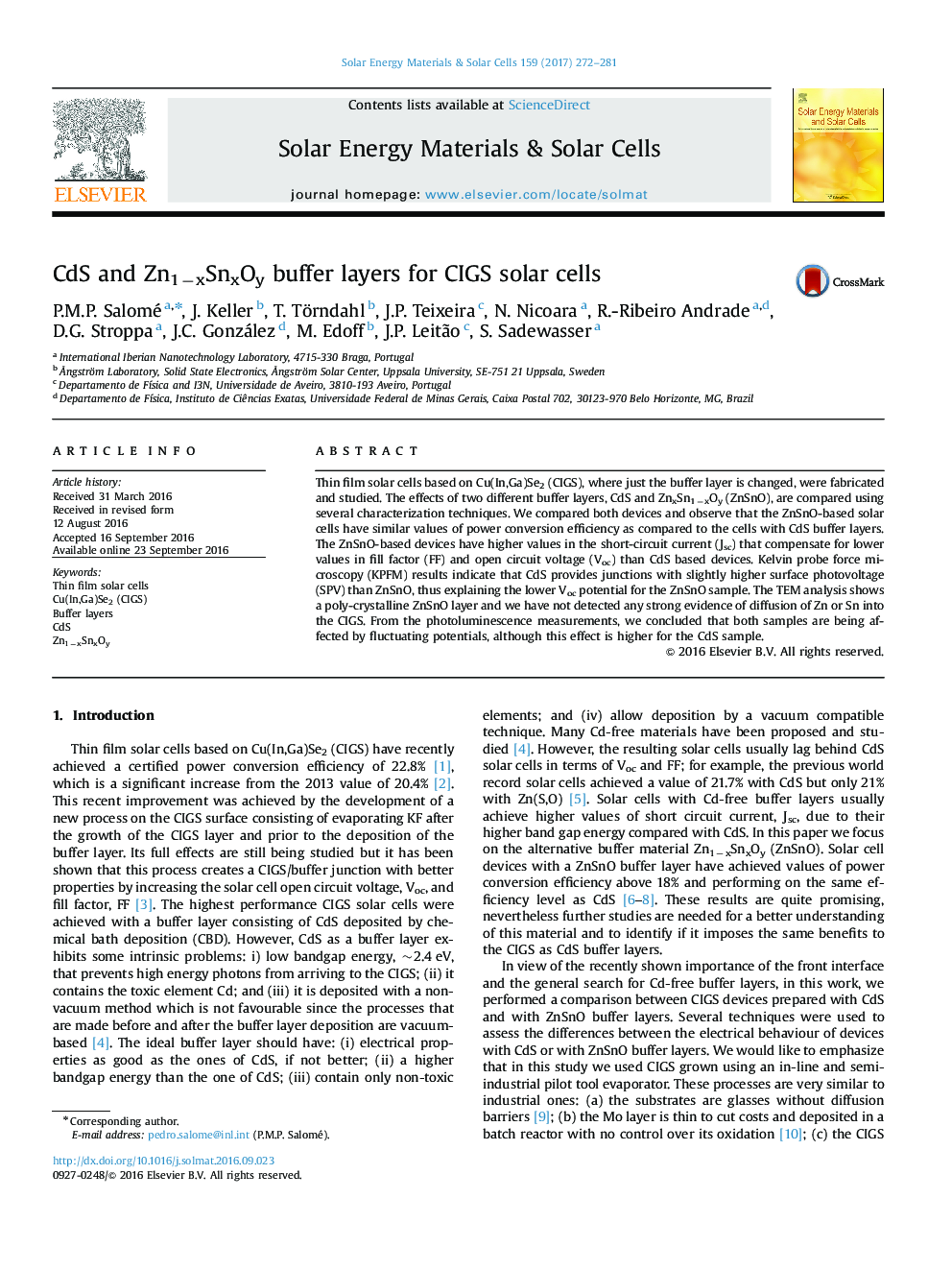| Article ID | Journal | Published Year | Pages | File Type |
|---|---|---|---|---|
| 6457499 | Solar Energy Materials and Solar Cells | 2017 | 10 Pages |
â¢CIGS absorbers from the same deposition run are finished into devices with CdS and ZnSnO.â¢The solar cells perform electrically at a similar level.â¢C-V measurements of ZnSnO could not be explained by simple models.â¢CdS provides junctions with slightly higher surface photovoltage than ZnSnO.â¢Photoluminescence of CIGS/CdS showed higher defects number compared with CIGS/ZnSnO.
Thin film solar cells based on Cu(In,Ga)Se2 (CIGS), where just the buffer layer is changed, were fabricated and studied. The effects of two different buffer layers, CdS and ZnxSn1âxOy (ZnSnO), are compared using several characterization techniques. We compared both devices and observe that the ZnSnO-based solar cells have similar values of power conversion efficiency as compared to the cells with CdS buffer layers. The ZnSnO-based devices have higher values in the short-circuit current (Jsc) that compensate for lower values in fill factor (FF) and open circuit voltage (Voc) than CdS based devices. Kelvin probe force microscopy (KPFM) results indicate that CdS provides junctions with slightly higher surface photovoltage (SPV) than ZnSnO, thus explaining the lower Voc potential for the ZnSnO sample. The TEM analysis shows a poly-crystalline ZnSnO layer and we have not detected any strong evidence of diffusion of Zn or Sn into the CIGS. From the photoluminescence measurements, we concluded that both samples are being affected by fluctuating potentials, although this effect is higher for the CdS sample.
Graphical abstractDownload high-res image (114KB)Download full-size image
